My first (and last) visit to Anata No Warehouse
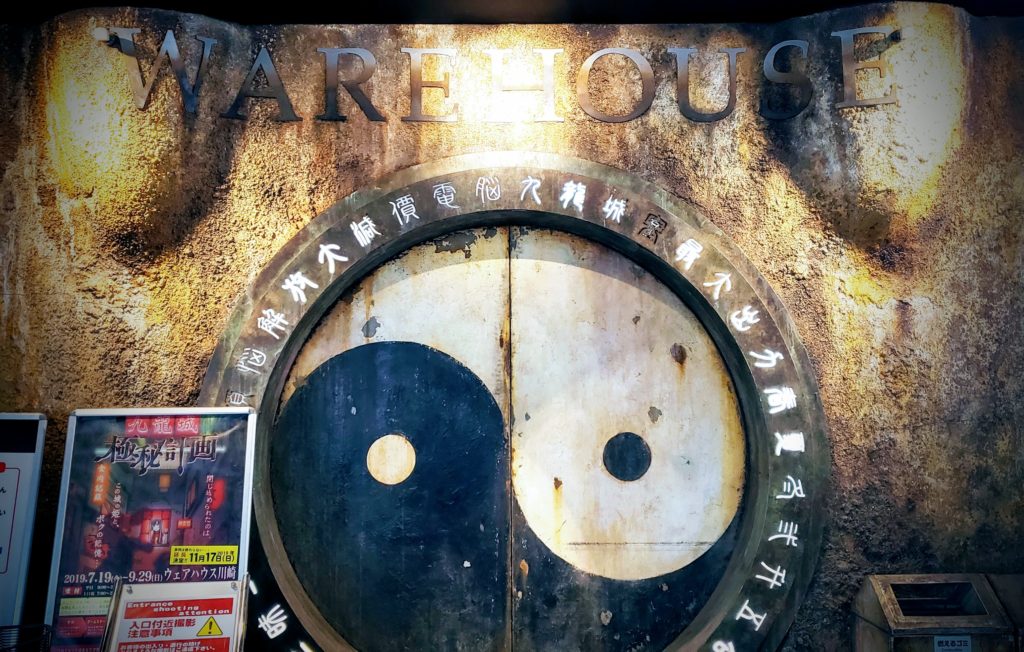
Anata No Warehouse (“Your Warehouse”) is one of the most famous arcades in Japan, thanks largely to its unique design. The building, which opened in 2009, is designed to resemble Hong Kong’s legendary Kowloon Walled City, with a rusty, rundown facade and odd decor strewn about to give it that retro HK-vibe.
Sadly, the Warehouse will be closing soon. If you’re reading this after November 17, 2019, then you’ve already missed your chance to seek it out. It’s gone, closed forever like so many other Japanese arcades have been lately.
I had never made my way to the Warehouse before, since it’s nearly 90 minutes away from my home, so my trip to check it out in its waning days before its closure was my first (and last).
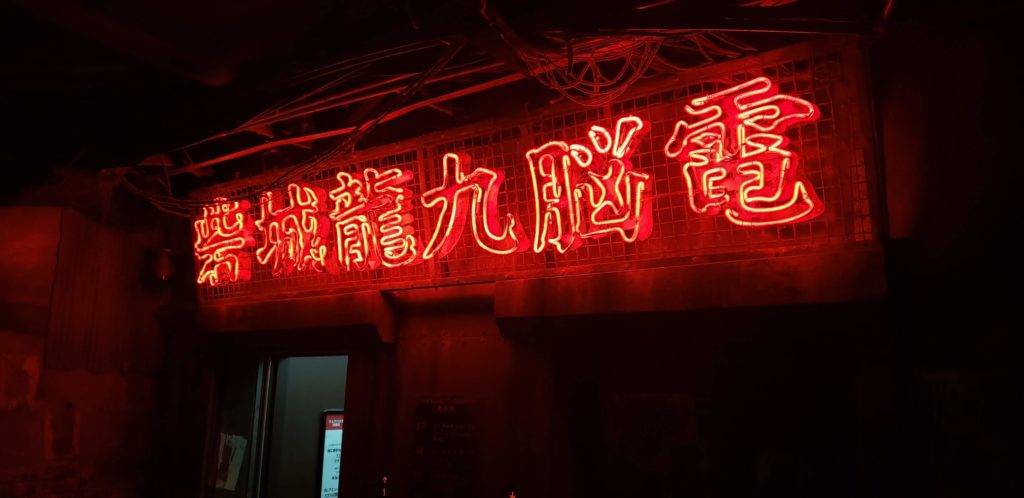
The building, thanks to its rust-covered exterior, was easy to spot, and it certainly made an impression right away. The automatic doors slid open to what seemed like another world. Upon entering, it looked like the hype was legit, the people behind the Warehouse really went the extra mile to make sure it resembled the rusty, rundown hellscape of Kowloon Walled City, right down to the flyers advertising illicit sexual acts.

However, that first floor, impressive as it was to us, housed no games. As my friend pointed out, it felt more like an are where you’d wait in line at a Disney theme park than anything else. Cool for sure, but it was literally just a glorified lobby. To find any games, we had to ascend the elevator to the second floor.
There, facade met function, with rusty walls, neon signs, and countless other ephemera reminiscent of the walled city surrounding you, with assorted arcade games peppered about. And for an arcade that opened just ten years ago, they had a surprising assortment of real old-school, hard-to-find classics. Sit down cabinets for OutRun and Space Harrier greeted us as we get off the escalator, as did several cocktail cabinets of 80s favorites.
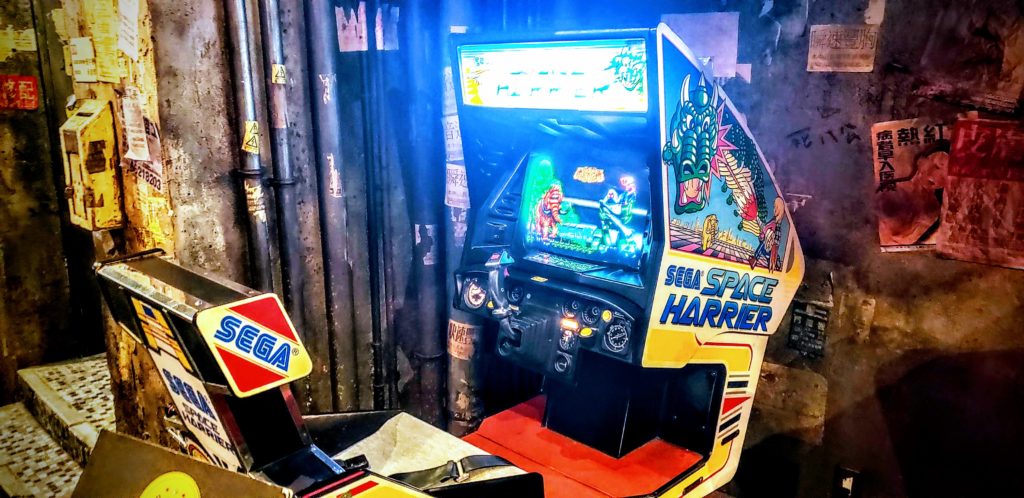
But, we turned the corner and walked into the arcade proper, the Kowloon-esque design choices quickly begin to vanish, and it’s not long before we found ourselves bathed in harsh neon lights and surrounded by UFO catchers (crane games) that resembled the kind of setting you’d find at any other arcade in the area. The Kawloon trappings were now firmly on the periphery, with just an occasional wall decoration reminding us of the building’s intent.

The games themselves were something of a letdown as well. Once we walked past the UFO catcher section, we found more arcade games, but a large portion of them were the same music and rhythm games that I can find at any other arcade. The occasional Final Fight or old-school Street Fighter cabinet aside, the rest were the same fighting games I see at most arcades in Akihabara.
We decided to take the elevator to skip up to the top floor and work our way down from there. Upon exiting the lift on the 5th floor, we found ourselves…here.
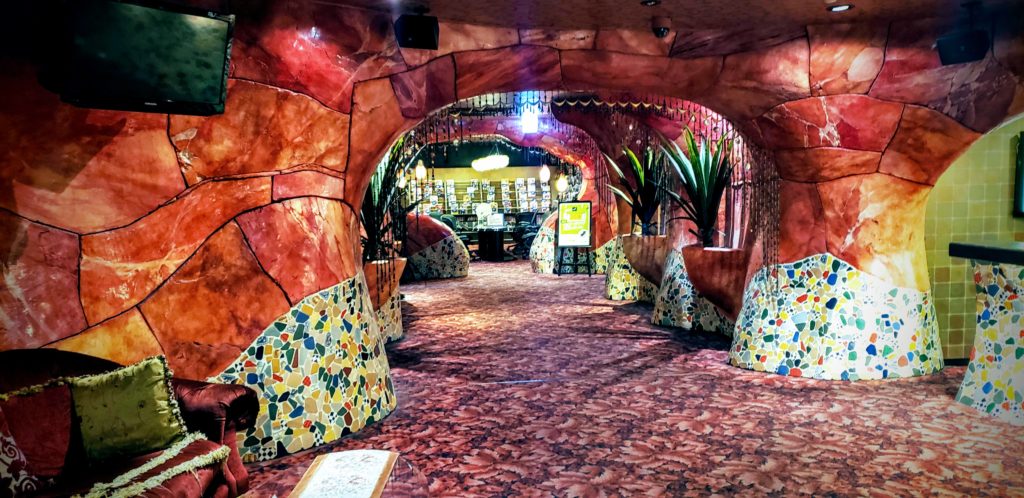
This was apparently some sort of restaurant or cafe. But we were not allowed to browse and were quickly asked to leave. We went to the fourth floor, which was largely dedicated to non-gaming amusements like billiards and darts, with the occasional fighting or shooting game thrown in. It was pretty much a ghost town at the time, but we were there at 1:00pm on a Thursday. I would imagine that it was probably substantially more busy during the weekends and evenings.
A trip down to the third floor greeted us with a cacophony of hellacious noise, so I knew that we had to be close to the medal games. These gambling contraptions are still popular in Japan, but I’ve never been able to make myself tolerate the noise they make long enough to understand how they work. They’re literally deafening.

Some games could be found around the edges of the floor though. On a balcony overlooking the second floor, we played some old-school shooters and arcade classics, like Raiden and Q-bert. Walking along the wall to the back, we saw some utterly massive horse-racing games, although some of them seemed barely functional.
That was another problem with the arcade. A lot of stuff there just didn’t work. “Out Of Order” signs were a common sight, with many of the classic games and amusements simply unplayable. Given that the arcade is closing shop soon, it made sense; why bother to fix a machine if it’s only going to be making you money for another 10 days or so? But it was still a bummer. Ironic that the building, famous for pretended to look like a rundown industrial wasteland, was literally turning into one itself.
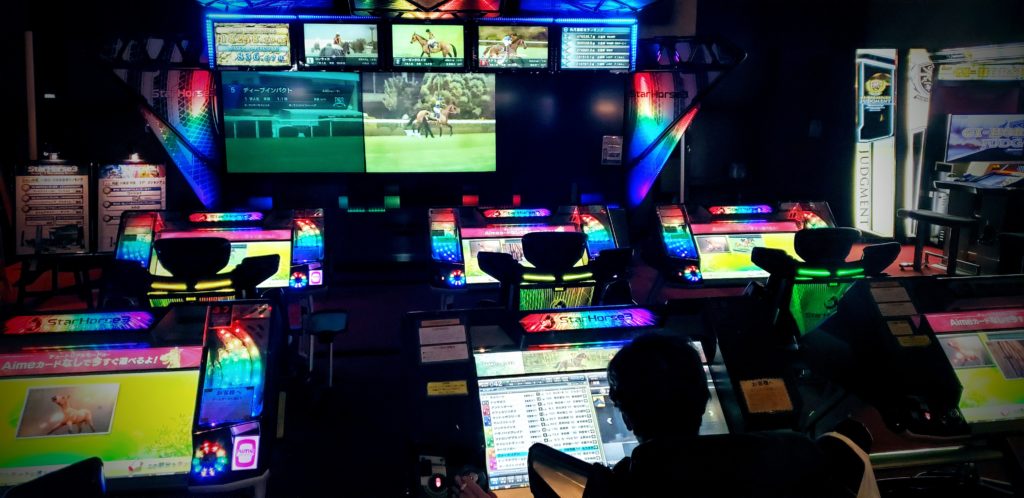
Anata No Warehouse has its charms, that’s for sure. It sure as hell makes a strong first impression. But with just one trip through its five floors, it became rather clear why it’s closing shop. Gimmicky decoy aside (which in actuality only makes up a fraction of the building), the Warehouse is just another arcade. It has a few more exceptional retro machines than most, but nothing all that special, and very few that would warrant repeat playing.
It’s very sad that the Warehouse is closing. It’s sad for the regular visitors, sad for the owners, and especially sad for the all the employees who are going to be out of a job. And while I’m glad I made the trip once to check it out, if the arcade suddenly announced tomorrow that they weren’t closing, I don’t think I’d make a second trip back. I live 20 minutes from Akihabara, and 30 minutes away from Mikado in Takadanobaba. Between the two, I can get most of my retro and current arcade gaming needs met.

What’s also sad is what the closure of Anata No Warehouse symbolizes: the continued decline of the Japanese arcade scene. Arcades in the country continue to close at an alarming rate, with no sign of the trend slowing down anytime soon. Still, I don’t expect the number of arcades in Japan to reach zero, or come anywhere close to America’s pathetic number. Many of the big arcades in the center of Tokyo seem to be doing just fine. And a lot of the smaller ones are finding ways to adapt with the times. Also, I suspect gamers might do well in a smaller landscape of arcades. Less choices, yes, but the ones that remain will probably be the best of the bunch, with everything they’d want to play.
Anata No Warehouse may have been more form than function, and that form may not have even been as great as people had let on, but it’s still going to be missed. And if you are reading this before November 17, 2019, and you can make the trip, I suggest doing it.
(And for more, much better photos of Anata No Warehouse, go here)
Leave a Reply